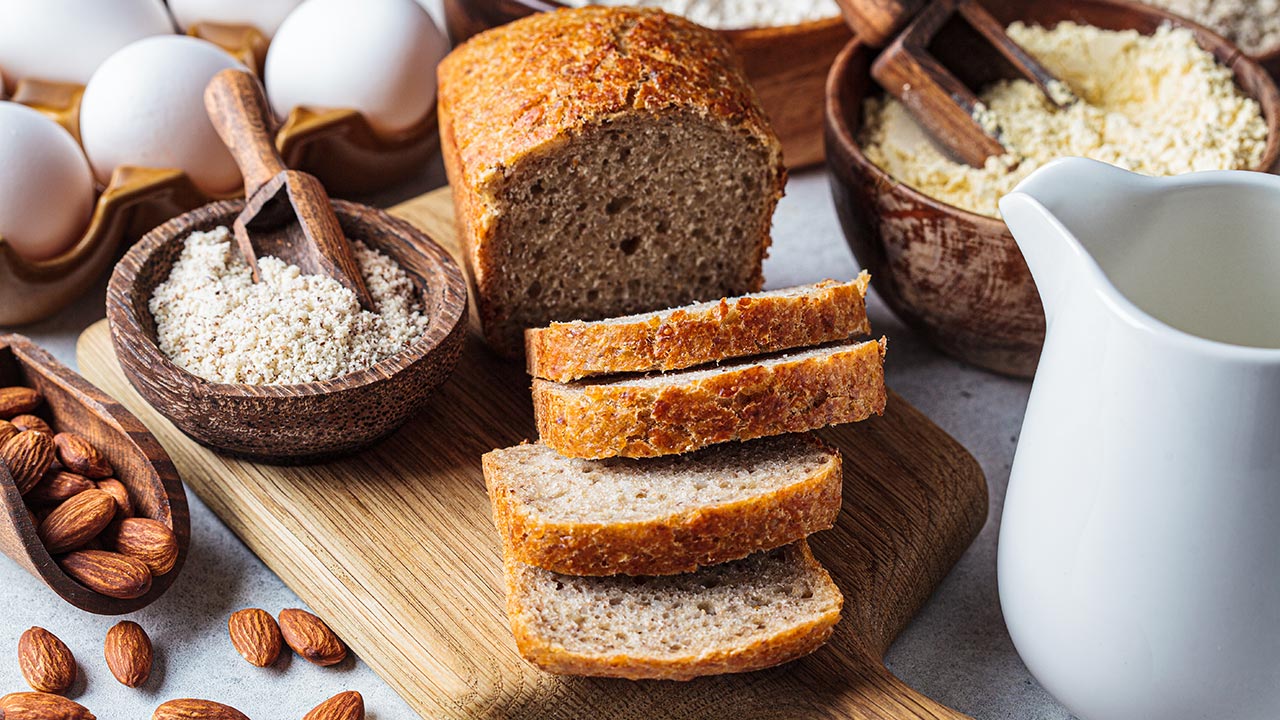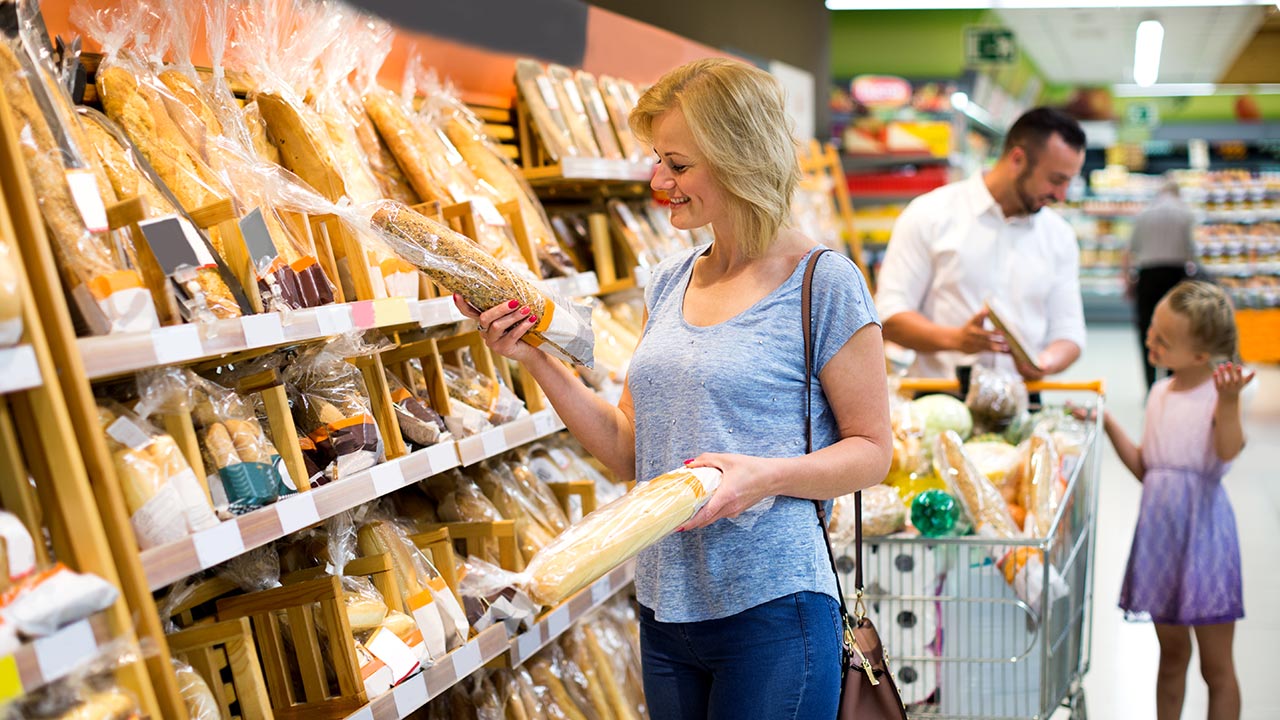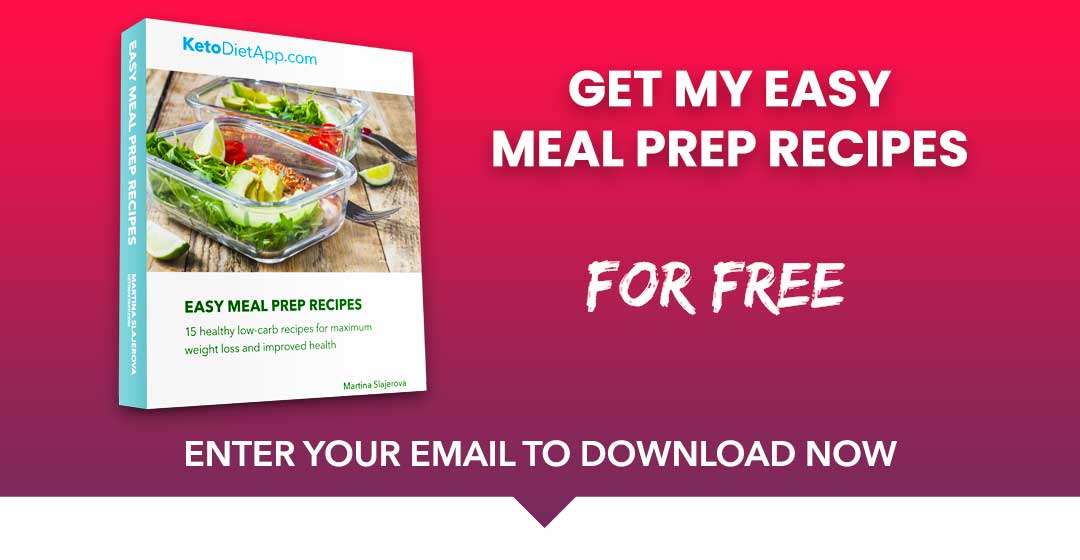Follow us 261.1k
Quick Summary tl;dr
Bread is a staple food that is typically high in carbohydrates. This is primarily due to the use of ingredients like wheat flour. Even gluten-free breads aren't always low in carbs as they often contain other high-starch flours, such as rice or potato flour.
If you're on a low-carb diet and still want to enjoy something similar to bread, there are plenty of alternatives you could try. One simple way is to substitute vegetables in place of bread. Lettuce, for instance, can be used as a wrap or sandwich layer. Similarly, bell peppers can be hollowed out and filled with sandwich fixings. Even slices of grilled sweet potato can serve as a bread substitute.
If you're looking for something more satisfying, there are protein-based bread alternatives. Cloud Bread, for instance, is a high-protein, low-carb bread alternative made primarily from eggs and cream cheese. Soul Bread is another low-carb option made with a base of cream cheese and protein powder. Finally, Protein Sparing Bread is a good option for those who are looking for a zero-carb, high-protein, low-calorie option.
If you're looking for something more bread-like, nut and seed-based bread alternatives are your best bet. These breads not only reduce carb intake but also provide a healthy dose of fiber and healthy fats. Also, these types of breads are the closest you will get to real bread.
Finally, if making your own bread isn't an option, there are store-bought low-carb bread options available. These breads are typically made from fiber-rich ingredients and contain minimal refined grains. They can be found in many supermarkets and health food stores, offering a convenient option for those on a low-carb diet.
Whether you're following a low-carb or ketogenic diet, have specific dietary restrictions, or just trying to reduce your overall carbohydrate intake, traditional bread might be one of the things you miss the most.
But worry no more! In this comprehensive guide, we delve into an array of tasty and healthy low-carb alternatives to bread. Our selection spans from vegetable-based substitutes and protein-rich breads to genuinely bread-like alternatives and readily available store-bought selections. There's a healthy bread alternative for everyone!
Understanding Carbs in Bread
When it comes to diets that restrict carbohydrates, the first thing that often comes to mind is bread. It's a staple food item in many cultures, and its versatility makes it a favorite among many. However, bread is often high in carbohydrates, making it less suitable for low-carb diets.
In this comprehensive guide, we'll delve into understanding the carb content in different types of bread, explore whether gluten-free bread is a suitable alternative, and provide you with a list of creative and tasty low-carb bread substitutes.
The amount of carbs in traditional bread can vary widely based on the type. Here are a few common examples:
- White Bread: White bread is made from wheat that has had the germ and bran removed. A typical slice of white bread contains around 12-15 grams of carbohydrates.
- Wholemeal Bread: Also known as whole wheat bread, wholemeal bread is made from wheat flour that contains all parts of the grain — the bran, endosperm, and germ. Despite the additional fiber content, one slice still contains 12-15 grams of carbohydrates.
- Sourdough Bread: Sourdough bread is made by the fermentation of dough using naturally occurring lactobacilli and yeast. Sourdough bread can have a slightly lower carbohydrate content compared to regular white or wholemeal bread due to the fermentation process. However, the exact difference would depend on the specific recipe and fermentation time.
Regardless of whether it's white, wholemeal, or sourdough, it's clear that traditional bread can significantly contribute to your daily carb intake. This presents a challenge for those striving to maintain a low-carb diet, making the quest for alternatives a necessity.
Is Gluten-Free Bread a Suitable Alternative?
Gluten-free bread is a staple in many gluten-free diets and is a necessity for those with conditions like celiac disease or gluten intolerance. Produced from gluten-free grains like rice, oats, quinoa, corn, or substitutes such as almond or coconut flour, these breads offer an appealing alternative for those on a gluten-free diet.
While gluten-free bread can be a great alternative for those avoiding gluten, it's important to remember that "gluten-free" does not automatically mean "low-carb." Surprisingly, a considerable amount of carbohydrates can be found in many gluten-free breads. This is because they are often made with starch-heavy flours like rice flour or potato starch to replicate the texture of traditional bread.
A typical gluten-free bread slice may contain approximately 15 grams of carbohydrates, though this can fluctuate depending on the specific brand. Therefore, while gluten-free bread can be beneficial for those who are sensitive to gluten, it is generally not the best option for those adhering to a low-carb diet.
We'll continue this guide by investigating bread substitutes that not only accommodate gluten-free requirements but also align with low-carb dietary preferences.
You might be wondering, if gluten-free bread isn't an ideal low-carb alternative, could sourdough bread be?
Is Sourdough Bread Gluten-Free and Lower in Carbs?
Sourdough bread, typically made from wheat or rye flour, contains gluten. The unique fermentation process of sourdough bread alters the gluten protein structure. This alteration might make the bread more digestible for individuals with non-celiac gluten sensitivity, but it doesn't make the bread safe for those with celiac disease. Hence, while sourdough may be more tolerable for some, it's not a gluten-free option. Those dealing with celiac disease or significant gluten intolerance should avoid sourdough and other breads made from wheat, barley, or rye.
As for carbs, sourdough bread is not considered low-carb. The level of fermentation can influence the carbohydrate content of sourdough bread to some degree, but in general, it's similar to other types of bread.
During the fermentation process, the natural bacteria and yeast in the sourdough starter consume some of the starches (carbohydrates) in the flour, transforming them into gases and acids. This process can reduce the overall carbohydrate content slightly. However, even with a long fermentation period, the decrease in carbs is not significant enough to classify sourdough bread as a low-carb food. However, sourdough's lower glycemic index, compared to many other breads, might cause a slower rise in blood sugar.
Despite sourdough bread's unsuitability for a low-carb or gluten-free diet, numerous valid alternatives exist. For instance, various vegetable, nut & seed based breads offer intriguing, diet-compatible options.
1. Vegetable-Based Bread Alternatives
Many vegetables can be used as bread substitutes. For example, lettuce can be used to make a delicious and versatile bread alternative perfect for sandwiches. Bell peppers are another great option for wraps or "breadless" sandwiches. Let's explore the vast range of low-carb alternatives to bread.

Lettuce Wraps and Unwiches
Large lettuce leaves are perfect as a wrap, and they're virtually carb-free. Iceberg, romaine, or butter lettuce make the best choices for wraps. Small lettuce types such as baby gems are an ideal vessel for any toppings. There's a couple of recipes you can try to get started:
Portobello Mushroom Caps
Roasted portobello mushrooms make a great sandwich bun or base for personal-size pizzas, offering approximately 3g net carbs per 100g. Give these Chicken Portobello Burgers a shot!
Bell Peppers
Halved bell peppers can act as delicious edible cups for sandwich fillings with approximately 6g net carbs per 100g. There's an array of recipes waiting for you:
Cucumber Subs
Cucumbers can be cut lengthwise and the seeds scooped out to create a "submarine" sandwich effect. They're refreshing and offer a crunch that many enjoy. Try these Creamy Tuna Cucumber Boats!
Eggplant Slices
Grilled or baked slices of eggplant can be used as a bread substitute, particularly for burgers or open-faced sandwiches, offering a robust texture that stands up well. You can find a recipe that uses this alternative in my Keto Simple Book!
Tomato Slices
Thick, beefsteak tomatoes can be sliced and utilized as a bread substitute for petite sandwiches, burgers, or sliders.
Sweet Potato Toast
Slices of sweet potato can be toasted and used in place of bread for open-faced sandwiches, adding a touch of sweetness that complements many toppings.
Remember, the carb count in these options will vary, and some options like sweet potato and tomatoes are higher in carbs than other vegetables but they can still be part of a balanced, low-carb diet.
Nori Wraps
Although not a direct replacement for bread, nori sheets make fantastic low-carb wraps!
Zucchini Bread
Zucchini can be used to bake a type of bread or as zucchini boats. It's a versatile vegetable with a subtle flavor that can work well with many fillings and toppings. Try this Savory Veggie Loaf!
Cauliflower Bread
New to this one? Think cauliflower crust pizza! You can shape the dough into a small bread roll, or a flatbread, and bake just like you would cauliflower pizza.
To sum up, vegetables offer not only nutritious but also diverse, low-carb options as bread substitutes. They can add variety, color, and texture to your meals, enhancing your overall dining experience.
2. Protein-Based Bread Alternatives
Protein-based bread alternatives are an excellent choice for those on a low-carb or ketogenic diet. They not only deliver a significant amount of protein but also tend to be notably low in carbs, making them ideal for a strict keto diet.

Protein Bread
Cloud Bread is a fluffy alternative is made from eggs, cream cheese, and cream of tartar. It's extremely low in carbs with less than 1g net carbs per piece. Named for its airy texture, Cloud Bread is versatile enough to complement both sweet and savory dishes. As one might anticipate, its moist nature gives it a slight eggy taste and texture.
Soul Bread takes the cloud bread concept a step further by incorporating butter, olive oil, cream, and protein powder. Unlike crumbly alternatives, this bread retains its structure perfectly, enabling ultra-thin slicing. Its adaptability is demonstrated by its ability to transform into a delightful French Toast. Though its texture is denser than regular bread, it offers a unique experience. However, due to the incorporation of protein powder, the flavor might appear unusual to certain palates.
Protein Sparing Bread by Maria Emmerich presents an excellent alternative for those seeking a low-carb and low-calorie version of light, fluffy white bread. While it may take some time to adapt to its distinct taste—common with most bread substitutes—embracing it without comparing it to traditional bread can unveil its versatile charm.
Egg Wraps
Egg wraps are just what they sound like - thin omelettes or crepes that can be used much like a tortilla for wraps or burritos. They're great for a breakfast wrap or a sandwich, and can even replace traditional tortilla wraps. Depending on what you fill them with, they can be almost carb-free. Try some of these recipes:
Chaffles
Chaffles, a keto-friendly invention, are created by combining cheese and eggs (and sometimes a smidgen of almond flour, coconut flour, or baking powder for texture) and cooking the mixture in a waffle iron. The outcome is a delicious, crispy substitute for waffles or bread that harbors 2-3g net carbs per serving, contingent on the exact recipe.
If you wish to make them, here's the best Guide to Chaffles, covering every aspect there is to know about these cheese waffles. These Italian Bread Pizza Chaffles are a delicious recipe that can be served as a side or used to make a quick sandwich.
Fat Head Bread
Fat head bread is a popular low-carb alternative made primarily from almond flour, mozzarella cheese, cream cheese, and eggs. It was initially shared by the creators of the documentary "Fat Head" and has since been a sensation in the low-carb community. The dough can be used for everything from pizza crust to bagels or sandwich bread. Depending on the thickness, each serving contains around 2-3g net carbs.
These Garlic Knots, Pretzels and Challah Bread represent just some of the numerous types of bread you can bake using Fat Head dough.
Meat Wraps
Thin slices of meat can be used to wrap up sandwich fillings for a virtually zero-carb meal. For example, a slice of turkey or ham can hold cheese, lettuce, and other low-carb toppings. You can use deli meat or leftover cooked meats, depending on your preference. Just watch out for processed meats that may have hidden carbs in the form of fillers or flavorings. Try these Italian Sub Roll-Ups!
To sum up, protein-based bread alternatives can be a great way to reduce your carb intake while adding valuable protein to your diet. They are satisfying and can help you stay fuller for longer.
3. Nut and Seed-Based Bread Alternatives
Nut and seed-based bread alternatives offer a hearty and satisfying option for those following a low-carb diet. Rich in healthy fats, fiber, and protein, these substitutes provide a range of flavors and textures that can cater to a variety of dietary preferences.

Nut and seed flours, such as almond and flaxseed, as well as coconut flour, can be used to bake low-carb breads. They provide a rich, nutty flavor and are packed with beneficial nutrients. Here are some of the best options if you're looking for the most authentic alternatives to bread. Each and every one of the bread recipes in this section are unique. Whether you are following a nut-free diet or avoid flax meal, we've got you covered. There's a bread recipe for everyone!
Bread Loaf Recipes
This section contains recipes for low-carb bread loaves that can be sliced and used just like traditional bread. From nutty, seed-filled loaves to lighter, fluffier options, these recipes offer a wide array of choices for your sandwich or toast needs.
Bread Rolls & Buns
Here you'll discover a variety of low-carb rolls and buns perfect for sliders, burgers, or dinner rolls.
Quick Bread Recipes
Quick breads are those are faster and simpler to prepare. They can be used just like sliced bread, for making sandwiches and toasts.
Quick breads are superb for both sweet and savory recipes including Grilled Cheese Sandwich, Avocado Toasts and Cranberry Brie Toasts.
Other Savory Bread Recipes
Explore a variety of unique savory bread substitutes! From herbed flatbreads to crusty baguettes, these recipes offer low-carb versions of your favorite savory breads for pairing with meals or enjoying on their own.
Sweet Bread Recipes
Craving something sweet without all the carbs? This section is filled with low-carb recipes for sweet breads. Whether you're looking for a raspberry loaf or a banana bread, these recipes offer sweet satisfaction while still keeping the carb count low.
In conclusion, seed and nut-based bread substitutes bring a unique, nutty flavor to your meals. They're low in carbs and high in fiber and healthy fats, making them a nutritious addition to a balanced diet.
4. Store-Bought Low-Carb Bread
Transitioning to a low-carb diet doesn't necessarily mean giving up the convenience and familiarity of traditional bread. Commercial low-carb breads are available in most supermarkets and health food stores, offering a useful alternative when time or resources for homemade versions are limited.

These breads are typically made using fiber-rich ingredients and minimal amounts of refined grains to maintain the carb count low. Some popular bases incorporate almond flour, coconut flour, flaxseed, and psyllium husk. Some manufacturers even add extra protein to their products for an added nutritional boost. In addition to pre-made bread alternatives, health stores often stock a variety of low-carb bread mixes.
Advantages of commercial low-carb breads include:
- Convenience: They provide a ready-to-eat, bread-like option for those following a low-carb diet.
- Variety: These breads come in numerous types and flavors, including sandwich bread, bagels, and tortillas, among others.
Despite these advantages, there are a couple of considerations to bear in mind:
- Ingredients quality: Some products may contain added sugars or unhealthy fillers to enhance their taste and texture. It's critical to read labels carefully to ensure you're choosing a truly low-carb and healthy option.
- Price: Due to the special ingredients and processes used to make them, low-carb breads can be more expensive than regular bread.
Overall, commercial low-carb breads offer a convenient and varied addition to a low-carb diet. However, it's crucial to choose wisely, monitoring the ingredients list and being aware of the potential cost.
Conclusion
In conclusion, navigating a low-carb lifestyle doesn't mean you have to give up on bread entirely. A world of delicious and nutritious alternatives awaits you, as demonstrated throughout this guide. From vegetable-based bread substitutes to store-bought low-carb breads, and even homemade bread recipes using alternative flours, there are countless ways to enjoy the texture and taste of bread without the high carbohydrate content.
Experiment with these different bread alternatives and recipes. Try them out, mix and match, and discover what you love most. You may find that your new favorite bread is not just healthier, but also more flavorful than the bread you were used to. Happy bread baking!
Do you like this post? Share it with your friends!
Let us know what you think, rate this post!
